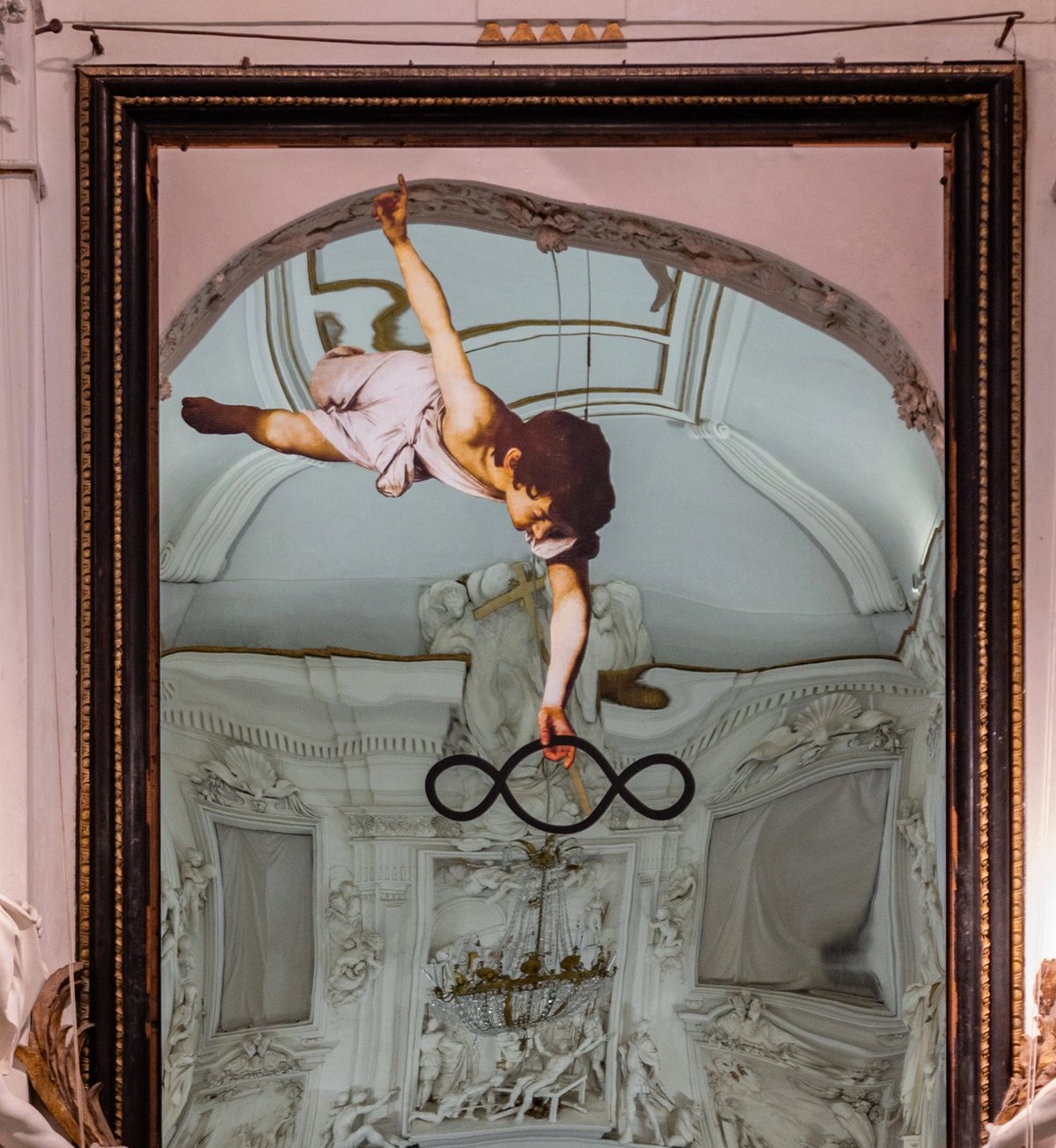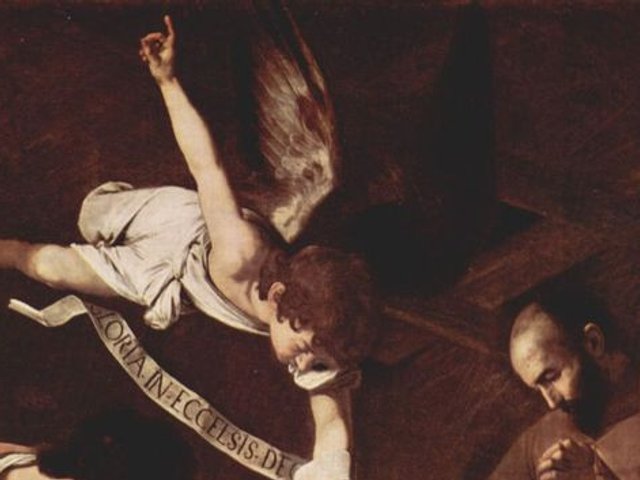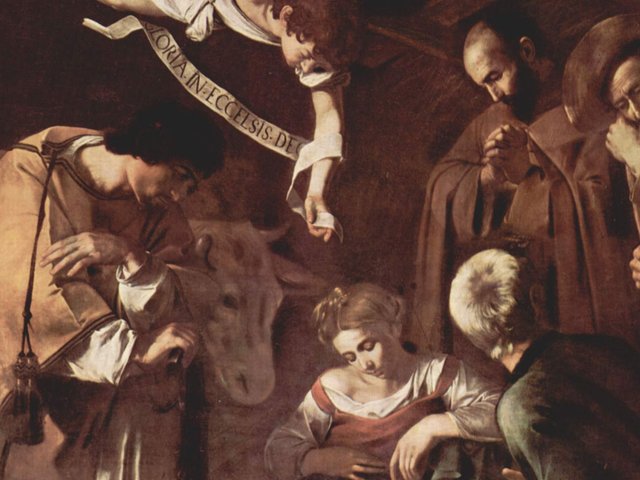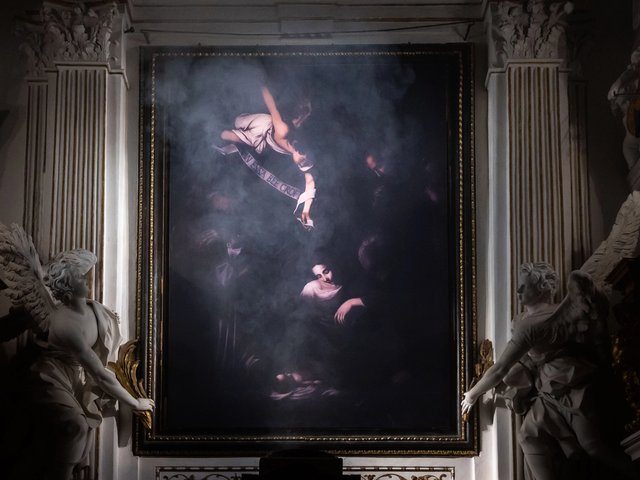The Italian artist Michelangelo Pistoletto has unveiled his homage to Caravaggio’s Nativity masterpiece at the Sicilian oratory where the 17th-century work was cut from its frame and stolen more than 50 years ago.
At midnight on Christmas Eve, Arte Povera pioneer Pistoletto unveiled his interpretation of Caravaggio’s painting Nativity with Saints Lawrence and Francis of Assisi (1600) at the Oratory of Saint Lawrence in Palermo, Sicily.
On 18 October 1969, thieves cut the Caravaggio canvas from its frame with a razor, rolled it up and fled. The passage of time and the endless versions of events offered by informers and pseudo-detectives have taken over the inquiries, while the actual fate of the Nativity remains shrouded in mystery.
Pistoletto’s work in the oratory, a signature mirror piece, shows the angel depicted in the original Caravaggio painting; in the new version however, angel’s scroll has been replaced by the symbol of the Third Paradise which comes from the sign of mathematical infinity. The mirror creates an image within an image by reflecting the depiction of The Martyrdom of Saint Lawrence on the opposite wall of the oratory by Giacomo Serpotta.
Pistoletto says in a statement: "By preserving a part of the ancient painting, the angel descending from the sky brings the Annunciation of the Third Paradise as a symbol of a possible balance between nature and artifice. This vision invites collective responsibility, transforming conflict into a new horizon of civilization, where creation prevails over destruction."
The Pistoletto initiative was launched by the non-profit Association Amici dei Musei Siciliani as part of an ongoing cultural project known as Next which is now in its 15th edition.
Each year, the Amici dei Musei invites a contemporary artist to create their own interpretation of the famous lost painting, adhering to two simple rules: the dimensions of the original work must be maintained—267x198 cm—and the theme of the Nativity must be reflected. Artists who have previously paid tribute to the missing Caravaggio work include Alessandro Bazan, Vanessa Beecroft and Fulvio Di Piazza.
“The aim of the project is to keep the memory of the famous canvas alive and to exorcise, through art, one of the most dramatic events in the history of cultural heritage, an open wound that still awaits, with hope, a possible recovery,” says a project statement.
There are many theories about the fate of the Caravaggio work including the proposition that it was kept in a barn where it was eaten by mice and pigs. Another hypothesis is that the painting was buried under rubble during the 1980 earthquake in Irpinia while negotiations were underway with the Camorra, the Neapolitan mafia, to exchange it for a cache of drugs and arms.
Another theory floats the idea that the painting was sold via the mafia to an art trafficker of Swiss origin, probably from Lugano, who proposed selling it in pieces. The theft of the Caravaggio, which is included in the FBI’s list of the top ten art crimes, has featured in the testimony of numerous mafia informants.
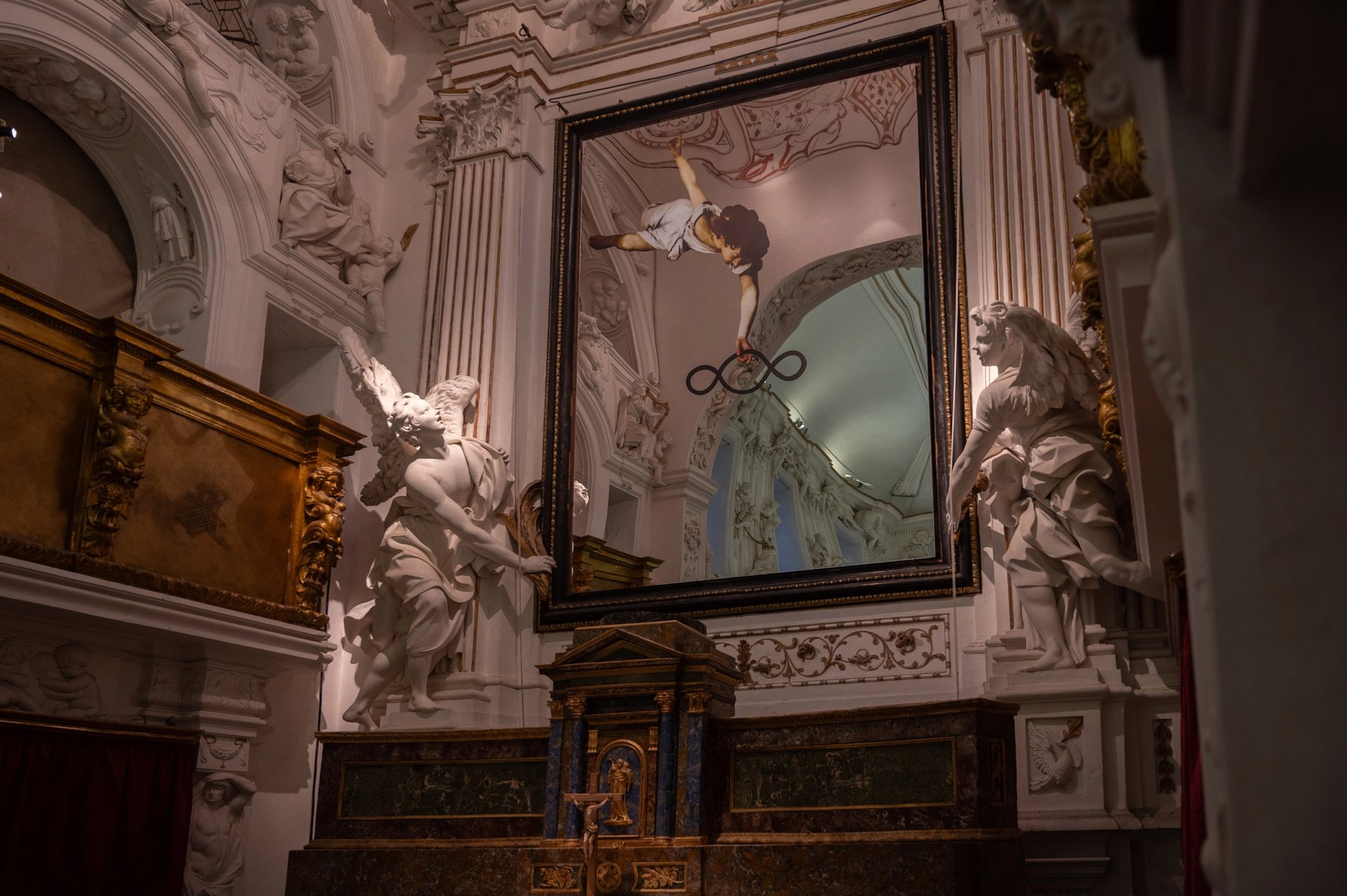
Michelangelo Pistoletto, Annunciazione Terzo Paradiso, in situ at the Oratory of Saint Lawrence in Palermo, Sicily
© Maurizio Zambito


